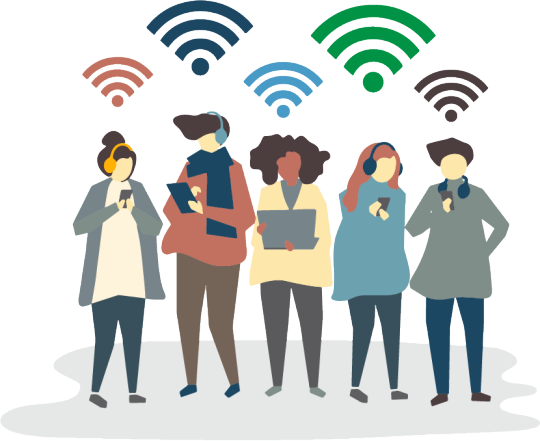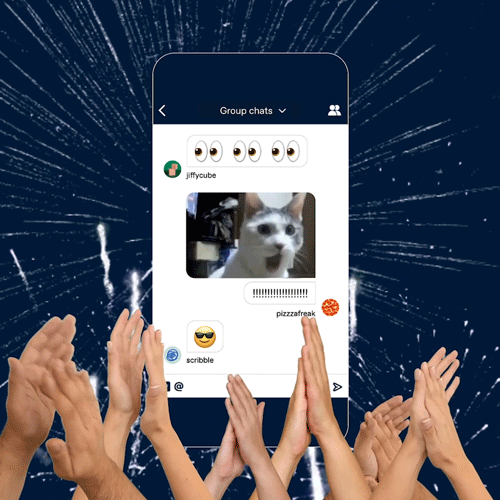Text
You have found your clone, now what?!

Recap from the previous episode...
There are a few factors that come into play that assist in helping the feeling of being connected in social media. Feeling that you belong via likes and comments fulfills our basic psychological need as a human. Finding others that share the same likes and dislikes can be described as homophily. Homophily is the illustration of a bond between like-minded individuals, the gravitational pull you feel when you find someone who shares the same interests. Read more here about the psychological meaning behind feeling connected through social media: https://analyticalartistthoughts.tumblr.com/post/644796290661744640/connection-found
Algorithms or Tunnel Vision?
The feeling of being connected in social media and being surrounded by like-minded individuals, homophily, exists mostly due to algorithms. Algorithms are the back-end systems working within social media networking platforms to show each person what they want to see. Algorithms cater to an individual’s likes and even dislikes. “People are shown things that appeal most to them, they click, they read, they watch, they fall into rabbit holes that reinforce their thoughts and ideas, they connect with like-minded people. They end up in their own personalized version of reality,” (Stern, 2021).
For example, Lucy enjoys reading and roller skating in the park near her home. Lucy completes frequent google searches about the best roller skates and searches for libraries in her area. If she were to open her Facebook account, her timeline may consist of businesses selling roller skates or advertisements for accessories to make reading books more enjoyable.
Just as easily as algorithms show us what we like, they also avoid showing us what we do not like. There may be options to report advertisements that do not interest you, which will advise the social media network site not to show any ads like the culprit ad.
But imagine a world where we are surrounded by different versions of ourselves. Yikes!
Our social media timelines are filled with like-minded people that enjoy the same things and dislike the same things. Every individual on our timeline will confirm any idea or bias, positive or negative. This can lead to possible risks in social media. If an individual comes across someone else who does not share the same beliefs or interests, it could result in cyber bullying. With a timeline of like-minded individuals that share the same beliefs, this could lead to groups of people ganging up on one person.
The sense of belonging to a community that supports your beliefs has positive and negative consequences. While on one hand, you have found people that can empathize and understand because they share the same interests as you. There is a chance that the support you are receiving is positive support for a negative topic. For example, a study was completed to “investigate the presence, popularity, and content of the ‘proana’ accounts on Twitter,” (Bert, Gualano, Camussi & Siliquini, 2016). “Proana” described a community of people that were pro anorexia nervosa. A group of people shared the same belief that anorexia was not a negative issue and those people supported each other and grew a community. This can be a potential risk with the feeling of homophily, it is possible to dismiss moral and logic.
Shake it off!
To combat these possible risks, the best possible solution is to maintain curiosity and an open mind. It is quite okay to not share the same beliefs as someone else but take some time to understand how that person developed those beliefs and the foundation behind it. You may surprise yourself with this new knowledge!
References:
Fabrizio, B., Gualano, M. R., Camussi, E., & Siliquini, R. (2016). Risks and threats of social media websites: Twitter and the Proana movement. Cyberpsychology, Behavior, and Social Networking, 19(4), 233–238.
Stern, J. (2021, January). Social-Media Algorithms Rule How We See the World. Good Luck Trying to Stop Them. The Wall Street Journal. https://www.wsj.com/articles/social-media-algorithms-rule-how-we-see-the-world-good-luck-trying-to-stop-them-11610884800
0 notes
Text
Connection found!

[The What] Zap! We are now connected!
Feeling connected today is the last emotion people are feeling. Social distancing, quarantining, and remote work and school have changed the trajectory in our world. The only safe and healthy way to connect to people is through technology, like video chats, phone calls, text messages, etc. Being unable to physically connect with our loved ones makes it difficult to fulfill the foundational psychological need that exists in all of us; to belong. “The need to belong is an individual’s basic psychological need to feel closely connected with others and to be part of social groups,” (Kim, Wan & Oh, 2016).
Some factors that can contribute to feeling connected in social media are discovering people that share the same hobbies and likes. That feeling that you are a part of a community helps to feel more connected. Another factor that contributes to feeling connected in social media are comments and likes, in response to your photos or posts. Knowing that another person is watching and enjoying your content helps you feel connected, digitally, and brings in the overall feeling of belonging.
[The Why] You’re just like me!
Homophily is a concept, meaning love of the same. It describes the bonding and the desire of individuals to find and gravitate to other like-minded individuals. Facebook groups, messenger chats, etc. are all examples of methods in which homophily is supported or created. You can become engulfed in a world of your desires and likes! Homophily is beneficial in social media because it caters to that psychological need to belong to something. The results of a study, that sought out to determine if homophily existed within journalists on social media, illustrated that “Most journalists were more likely to interact with journalists who have the same gender, work in the same organization, on the same beat or in the same location,” (Hanusch & Nölleke, 2019).
[The How] Behind the Scenes
This homophily phenomena can easily result from social media use because of the algorithms existing in the back ends of social media. Think of a time you realized you needed to stop, and purchase cake mix, to make a cake for a special loved one. You verbally remind yourself, and within 5 minutes your social media timelines are filled with cake decorators and advertisements marketing cake mix brands.
“Social media algorithms are now the basis for all social media platforms,” (McClain, 2017). The algorithms are used to pull people that are similar together, create that homophily phenomena and create a connection and feeling of belonging. Based off my experience, the main platforms responsible for using algorithms to this extent are, but not limited to, Facebook, Instagram, and TikTok.
So, next time you’re scrolling and liking posts or pictures, think about the huge connection you just created with a tap of your thumb.
References
Hanusch, F., & Nölleke, D. (2019). Journalistic homophily on social media. Digital Journalism, 7(1), 22–44. https://doi.org/10.1080/21670811.2018.1436977
Kim, Y., Wang, Y., & Oh, J. (2016). Digital media use and social engagement: How social media and smartphone use influence social activities of college students. Cyberpsychology, Behavior, and Social Networking, 19(4), 264–269.
McClain, K. (2017). Do You Know What Homophily and Algorithms are Doing in Your Social Media? Medium. http://medium.com/@menosfun/do-you-know-what-homophily-and-algorithms-are-doing-in-your-social-media-6b08e555aebb

0 notes
Text
How to Capture Attention and Maintain it
Gotta Catch 'Em All - Social Media Style

Capture: /ˈkapCHər/ An act of catching, winning, or gaining control by force, stratagem, or guile (Merriam-Webster, 2021).
To capture attention is to catch, grab and hold a person’s every move for a period. In social media, this is the equivalent to that continuous scroll.
You know exactly what I mean!
When you get caught in a rabbit’s hole, diving further and further, at the speed of your thumb swiping your phone screen.
The significance in capturing attention in social media is most meaningful to businesses and social media influencers. Businesses and social media influencers need to capture attention on social media to sell products, sell services, and build a community to support their content.
Here are a few strategies for gaining viewer attention in social media:
Build audience-directed content, aimed at your ideal person. If you are attempting to sell a service or product, the first question you should ask yourself is Who is my audience? To be able to capture attention on social media, you must create an ideal person that wants to see your content. Get into as much detail as possible! (i.e., How old is this person? What kind of career does this person have? What does this person do in their free time? Etc.). After answering that question, every other question can easily be answered. Now that you know about your ideal person, you know the content that the person wants to see. You got it! Now you can capture attention of that audience on social media.
Know your product or service and market on the best platforms. Another important strategy to gain viewers’ attention is to market to your audience on platforms that benefit your product or service. For example, it probably would not be ideal to advertise your alcohol service on LinkedIn at 2am in the morning. This goes back to knowing your audience and promoting your product or service on the best platform.
Show portions of the process of creating your product or service, limited to short time spans. “In short, the ability for content to capture attention may be a necessary prerequisite to reach a large audience (i.e., go viral) and exert social influence in domains such as morality and politics,” (Jost et al., 2018 as cited in Brady, Gantman, & Van Bavel, 2020). The attention span of individuals on social media is extremely short and quick, so make your post short and sweet, most importantly, to the point.
Be mindful, all attention is not good attention. With every positive attention you receive, be prepared to receive negative attention, as well.
Once you capture your audience’s attention, the next step is to secure that engagement you have received. You have got the deal and now, to seal the deal! Securing the engagement in social media means that you are in the process of building a community. The significance lies in creating solid bonds with your followers and audience.
Check out the following methods to secure engagements in social media:
Be consistent – Post often and consistently! Some businesses have had success in posting on a scheduled basis.
Be open and honest – To secure an engagement in social media, it is best for your audience to trust you. Your newly formed community needs to depend on you for content, which will lead to sales and bookings.
Keep lines of communication open – Your audience should be able to easily reach out to you, with quick response times! To assist in securing engagements in social media, ensure you are including your audience by inquiring the kind of content the audience wants to see, and allowing them to ask questions.
References:
Brady, W. J., Gantman, A. P., & Van Bavel, J. J. (2020). Attentional capture helps explain why moral and emotional content go viral. Journal of Experimental Psychology: General, 149(4), 746–756. https://doi.org/10.1037/xge0000673
Lahuerta-Otero, E., & Cordero-Gutiérrez, R. (2016). Looking for the perfect tweet. The use of data mining techniques to find influencers on Twitter. Computers in Human Behavior, 64, 575–583. https://doi.org/10.1016/j.chb.2016.07.035
1 note
·
View note